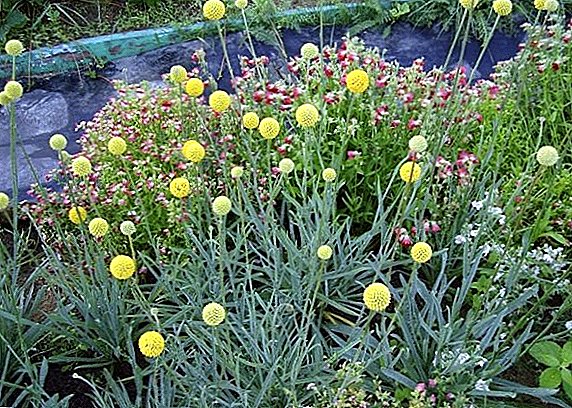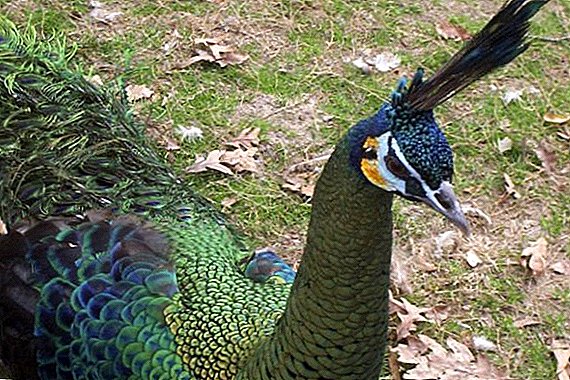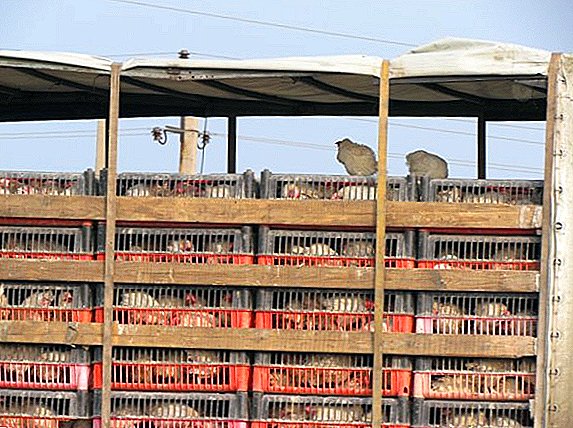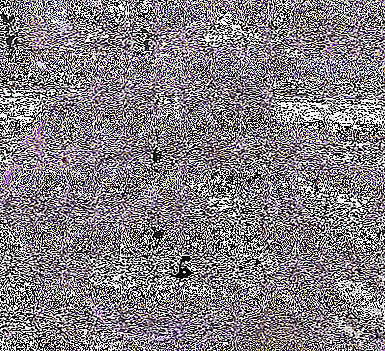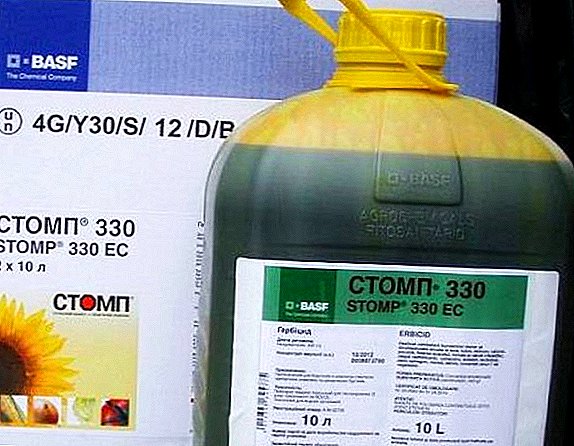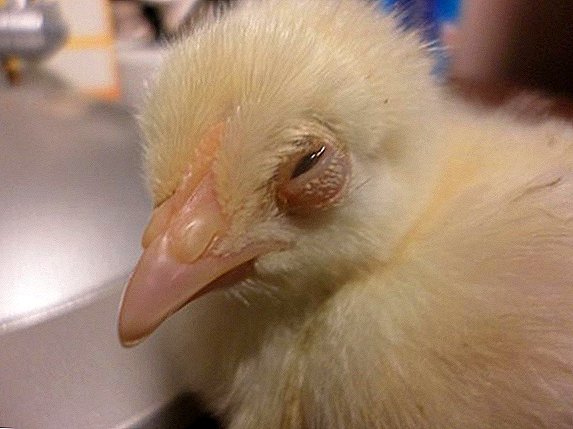 Blind chicken is a stable expression applied to a poorly seeing person, which arose from the fact that at dusk, and especially in the dark, this poultry almost completely loses its orientation in space, so its organs of vision are arranged. But if the so-called chicken-headed blindness is normal for this species of birds, then swollen, swollen, reddened or watery eyes in a bird are an obvious symptom of the disease, which, if not taken urgent measures, can in some cases destroy the whole herd. There are at least a dozen different ailments affecting the organs of chickens, and the poultry farmer needs to be able to distinguish at least the most basic of them in order to react to the problem in time and adequately.
Blind chicken is a stable expression applied to a poorly seeing person, which arose from the fact that at dusk, and especially in the dark, this poultry almost completely loses its orientation in space, so its organs of vision are arranged. But if the so-called chicken-headed blindness is normal for this species of birds, then swollen, swollen, reddened or watery eyes in a bird are an obvious symptom of the disease, which, if not taken urgent measures, can in some cases destroy the whole herd. There are at least a dozen different ailments affecting the organs of chickens, and the poultry farmer needs to be able to distinguish at least the most basic of them in order to react to the problem in time and adequately.
Symptoms
Eye problems in chickens can occur for various reasons. Conventionally, they can be divided into three main categories:
- Injuries - mechanical damage to the eyes or the ingress of dust, insects and other small objects. Despite the fact that such problems can bring a lot of inconvenience and suffering to the bird, for the farmer they are the least evil, since they do not threaten other inhabitants of the house and do not require expensive medical treatment.
- Eye diseases, non-infectious. This category, for example, includes various tumors that affect the eyes of a bird. The treatment of such ailments is quite complicated, sometimes the problem cannot be solved without surgical intervention, but, as in the first case, the rest of the livestock of birds is safe.
- Infectious diseases, requiring immediate isolation of sick birds and the adoption of emergency preventive measures against all other birds, in contact with it.
 It is for this reason that it is very important, noticing the problems with the eyes of the chicken, to determine the presence of other associated symptoms that can help suggest the correct sequence of actions.
It is for this reason that it is very important, noticing the problems with the eyes of the chicken, to determine the presence of other associated symptoms that can help suggest the correct sequence of actions.Eye diseases are a fairly common occurrence among chickens. Consider in more detail the causes, symptoms and treatment of eye diseases in chickens.
In other words, the symptoms of the disease are local and general. Local ones include the following types of eye damage:
- swimming, swelling (first one eye, then the other);
- sticking together (one or two eyes do not open);
- redness;
- festering;
- tearing;
- the presence of tumors (usually on the lower eyelid);
- blindness (on one or both eyes).
 Finding any of these signs, you must exclude or confirm the presence of the following additional markers (common symptoms):
Finding any of these signs, you must exclude or confirm the presence of the following additional markers (common symptoms):- runny nose (nasal discharge);
- lack of nasal breathing;
- coughing, sneezing;
- wheezing in the lungs;
- hard, uneven, shortness of breath;
- loss of appetite;
- increased thirst;
- lethargy;
- change stool (liquid droppings, changing its color, smell);
- fever;
- weight loss;
- staggering gait, loss of coordination of movements, lameness;
- the presence of mucus in the mouth.

Possible diseases
Let us now consider the main diseases of chickens, accompanied by problems with the organs of sight, see what set of symptoms each of them is characterized by, and also give specific recommendations to the farmer, who has come across a disease in his feathered wards.
Conjunctivitis
Everyone knows that conjunctivitis is, after all, every one of us has experienced the “charm” of inflammation of the mucous membrane of the inner surface of the eyelid at least once in a lifetime. In chickens, as in humans, this disease is often the result of injury to the organs of vision, eye contact with foreign objects, dust, gas or smoke, as well as a lack of certain vitamins (primarily vitamin A).
Important! Conjunctivitis can be an independent problem, but it can also be a symptom of a common infectious disease, such as influenza.
A characteristic feature of conjunctivitis is the fact that, in addition to swelling, tearing, swimming, and eye inflammation, resulting from this background, visual impairment and possible loss of appetite and general weakness, no other symptoms are usually observed. Inflamed eyes give the chicken serious anxiety, she constantly tries to scratch her eyes with her paw, which only makes the problem worse.  If conjunctivitis is detected on time, treating the bird is not a particular problem. First of all, the diseased eye must be washed and sanitized, making sure beforehand that there are no foreign objects in it, and if such objects are found, they should be carefully removed with tweezers. For this purpose, suitable:
If conjunctivitis is detected on time, treating the bird is not a particular problem. First of all, the diseased eye must be washed and sanitized, making sure beforehand that there are no foreign objects in it, and if such objects are found, they should be carefully removed with tweezers. For this purpose, suitable:
- medicine chamomile decoction;
- boric acid solution;
- furatsilin;
- zinc sulfate 0.5%.
 It is advisable to repeat the procedure several times a day until the inflammation stops. It is also useful to drip eyes with vitamin eye drops, they can be purchased at a regular pharmacy. All these drugs contain in their composition vitamin A, which has a beneficial effect on the organs of vision and helps the body to cope with conjunctivitis.
It is advisable to repeat the procedure several times a day until the inflammation stops. It is also useful to drip eyes with vitamin eye drops, they can be purchased at a regular pharmacy. All these drugs contain in their composition vitamin A, which has a beneficial effect on the organs of vision and helps the body to cope with conjunctivitis.Among other therapeutic interventions, the following can be recommended:
- treat the affected eye with tetracycline ointment;
- drip "Levomitsetin" (weekly course one drop twice a day);
- Introduce additional vitamin supplements into the diet: natural (grated carrots, green salad) or synthetic (for example, add Gamavit, a complex immunomodulatory drug for animals, to the drinker);
- add sulfur and bone meal to food.

Xerophthalmia
Another possible eye problem that is common to humans and chickens is xerophthalmia, which literally translates to "dry eyes" (from ancient Greek ξερός - "dry" and ὀφθαλμός - "eye"). This pathology is associated with impaired function of the lacrimal gland, but unlike conjunctivitis, it does not manifest either in the form of puffiness or in the form of decay, and therefore it is much more difficult to detect the problem.
Important! Xerophthalmia is dangerous not so much by itself, but because of the risk of eye damage by bacteria, viruses, or pathogenic fungi, which are protected by properly functioning tear glands.
Signs of xerophthalmia are:
- increased tearing and the presence of mucous lumps in the corners of the eyes - at the initial stage;
- very dry eyes with inflamed blood vessels and light swelling in subsequent stages;
- painful reaction to bright light;
- lethargy, loss of appetite;
- reduced productivity.

But before talking about treatment, it should be noted that xerophthalmia can be caused by various reasons, in particular:
- eye injury;
- burn mucous membranes (for example, because of the potent chemicals used in the disinfection of the chicken coop);
- too dry air in the hen house;
- lack of vitamins in the body of a bird;
- natural aging processes.
- in washing and instillation of the eyes (as in the case of conjunctivitis);
- in changing conditions of poultry keeping (increase of air humidity);
- in the correction of the diet (the addition of vitamin A).
 Add vitamin A to the diet of chickens
Add vitamin A to the diet of chickensOrnithosis
This is a systemic infectious disease that affects, in addition to the eyes, lymphatic vessels, nervous and genital systems, as well as the internal organs of a human or animal, more commonly known as chlamydia.
The same disease is sometimes referred to as neoriketsiosis, psittacosis or parrot fever (domestic parrots and pigeons suffer from chlamydia much more often than chickens, but pigeons and other wild birds, as well as rodents as potential infection brokers, can cause a real epidemic on a bird farm).
Did you know? Pigeons are probably the main threat to poultry. The number of individuals infected with chlamydia in different territories varies from a rather impressive 22% to a critical 85%.
The causative agent of ornithosis is the coccoid bacterium Chlamydiae psittaci, which is an intracellular parasite.  Cocoa bacteria Chlamydiae psittacі The difficulty of diagnosis lies primarily in the fact that most of the symptoms accompanying ornithosis are also characteristic of other infectious diseases. The second reason is that it is in chickens, unlike ducks and turkeys, that the disease is asymptomatic for a long time.
Cocoa bacteria Chlamydiae psittacі The difficulty of diagnosis lies primarily in the fact that most of the symptoms accompanying ornithosis are also characteristic of other infectious diseases. The second reason is that it is in chickens, unlike ducks and turkeys, that the disease is asymptomatic for a long time.
So, ornithosis may be accompanied by:
- eye inflammation;
- mucous discharge from the nose;
- cough;
- sneeze;
- shortness of breath;
- liquid stool (litter becomes green);
- yellowness;
- general weakness;
- loss of appetite;
- weight loss.
 Loose stools as one of the symptoms of ornithosis
Loose stools as one of the symptoms of ornithosisA reliable diagnosis can be made solely on the basis of laboratory tests.
Antibiotics are the only effective method of treating ornithosis, however, the expediency of such measures is disputed by many specialists, as the diseased bird most likely remains a carrier of a dangerous infection for its entire life, and therefore carries a real threat to other members of the herd.
For this reason, individuals affected by ornithosis and even suspecting for the presence of the disease should be killed and burned. Only externally healthy birds that were in contact with sick congeners are exposed to preventive antibiotic therapy.
Possible treatment options:
| Drug name | Daily dosage per 1 kg of live weight | The number of receptions during the day | Duration of treatment |
| "Tetracycline" | 40 mg | 1 | 10-14 days |
| "Erythromycin" | 40-50 mg | 2 | 14 days |
| "Biomitsin" | 30 mg | 1 | 10-14 days |
| "Chlortetracycline" | 15-75 mg | 1 | 14 days |
 Timely vaccination is a much more reliable way to avoid ornithosis. For example, the autoimmune vaccine "Olivac" protects chickens from a number of dangerous infections, including ornithosis and salmonellosis. The vaccine is suitable for both adult chickens and chickens from the age of three days.
Timely vaccination is a much more reliable way to avoid ornithosis. For example, the autoimmune vaccine "Olivac" protects chickens from a number of dangerous infections, including ornithosis and salmonellosis. The vaccine is suitable for both adult chickens and chickens from the age of three days.Important! Viral diseases are not treated with antibiotics. The peculiarity and danger of the virus is that it does not parasitize in the cell, like most bacteria, but integrates into its structure and makes it work for itself. To kill a virus without killing a cell is impossible.
Sinusitis (flu)
Respiratory viral diseases in chickens, including influenza, are very characteristic. By affecting the mucous membranes of the upper respiratory tract, the virus causes the following symptoms:
- nasal mucous discharge;
- cough;
- sneeze;
- labored breathing;
- hoarseness in the throat;
- conjunctivitis;
- keratitis (inflammation of the cornea);
- tearing;
- reduction in the size of the eyeball, accompanied by a sharp decrease in vision;
- stuck feathers on the head;
- head twitching;
- weakness;
- exhaustion;
- Sometimes additional problems such as loose stools, convulsions, and dysfunction of internal organs are added to the above list.
 Chicken's weakness as a manifestation of sinusitis Even with a fairly strong viral infection, the chicken's body (like humans) can cope on its own if you give it time and help a little. Sick birds should be isolated from the rest of the herd, give them as much more drink and focus on vitamin supplements in feed. With a favorable outcome, a full recovery should occur within a week, otherwise the measures taken will at least help save other inhabitants of the house.
Chicken's weakness as a manifestation of sinusitis Even with a fairly strong viral infection, the chicken's body (like humans) can cope on its own if you give it time and help a little. Sick birds should be isolated from the rest of the herd, give them as much more drink and focus on vitamin supplements in feed. With a favorable outcome, a full recovery should occur within a week, otherwise the measures taken will at least help save other inhabitants of the house.Trichomoniasis
Trichomoniasis is a fairly common infectious disease in chickens. Unlike sinusitis caused by a virus, this disease is bacterial in nature. Its causative agent is the unicellular anaerobic parasite Trichomonas gallinae (Trichomonas). It primarily affects the oral cavity, goiter, esophagus and stomach, as well as other internal organs of the bird.
The disease is characterized by the following symptoms:
- inflammation of the mucous membrane of the eyes;
- discharge of yellowish fluid from the mouth;
- the presence on the mucous membrane of the mouth of a cheesy plaque, with the removal of which remains a deep bloody wound;
- refusal of food (which is caused by painful sensations when swallowing);
- lethargy;
- ruffled plumage;
- lowered wings;
- lameness;
- lack of coordination of movements;
- diarrhea (yellow litter with a characteristic odor and foam);
- twitching, convulsions.

Antimicrobial agents are needed for treatment. Metronidazole (the most well-known trade name is Trihopol), as well as Nitazol, Furazolidone and Ronidazole, show the greatest effectiveness.
Important! Trichomoniasis by external signs is almost impossible to distinguish from other bacterial infections (for example, candidiasis and smallpox), as well as the usual avitaminosis. A reliable picture can be obtained on the basis of the analysis of a smear from the mucous membranes of a sick bird.
Therapeutic course "Metronidazole" lasts 7-8 days with a daily double dose of the drug at 10 mg per kilogram body weight (daily dose - 20 mg).  In addition to drug therapy, it is necessary to remove the chewy plaque from the throat of a sick bird, rinse (clean) the oral cavity, and also conduct a goiter massage to alleviate the condition of the chicken and prevent its exhaustion.
In addition to drug therapy, it is necessary to remove the chewy plaque from the throat of a sick bird, rinse (clean) the oral cavity, and also conduct a goiter massage to alleviate the condition of the chicken and prevent its exhaustion.
Haemophilosis
Hemophilosis in chickens is very easy to confuse with sinusitis. But despite the fact that these diseases have almost the same symptoms, their nature is completely different. Hemophilosis is a bacterial infection, not a viral infection. Its pathogen is a gram-negative cocci-shaped bacillus Bacterium hemophilus gallinarum.
Did you know? Meat affected by avian flu chickens, contrary to existing concerns, can be eaten. It is only important to conduct a thorough heat treatment. Influenza virus dies at temperatures above +70 ° C.
Hemophilosis is often called infectious rhinitis. Its main symptom is incessant for weeks abundant discharge from the nose of birds of transparent mucus, initially liquid, then gradually thickening. In addition, the disease may be accompanied by:
- conjunctivitis;
- obstructed nasal breathing;
- yellowness;
- shrinking and loss of brightness of the earrings and the ridge (caused by the defeat of the subcutaneous tissue on the head);
- limping;
- swelling in the legs and joints;
- loss of appetite;
- anemia.
 Treatment of hemophillosis is carried out with the use of drugs acting on the pathogen. For example, the following treatment options are possible:
Treatment of hemophillosis is carried out with the use of drugs acting on the pathogen. For example, the following treatment options are possible:| Drug name | Daily dosage | Method of use | Duration of treatment |
| Sulfonamides ("Etazol", "Disulfan", "Phthalazole", "Sulfadimezin") | 5 g per 10 liters of water | Medicinal solution is poured into drinkers instead of water. | 3-5 days |
| "Chlortetracycline" | 20-40 mg per 1 kg of body weight | Added to feed | 4-5 days |
| "Terramycin" | 5-6 mg per 1 kg of body weight | It is added to drinking water. | 4-5 days |
| "Penicillin" | 30000-50000 IU per 1 kg of live weight | Intramuscular injection | 4-7 days, sometimes up to 10 days |
| "Streptomycin" | 30-40 mg per 1 kg body weight | Intramuscular injection | 4-7 days |
| Tylosin | 0.1-0.2 ml per 1 kg of live weight for Tylosin 50 and 0.025-0.5 ml per 1 kg of live weight for Tylosin 200 | Intramuscular injection | 5-7 days |
| "Furazolidone" | 2-4 mg per head (depending on age) | It is added to the feed (the daily dose is divided into 2 parts, the interval between intake should be at least 6-8 hours) | 4-7 days |
 In parallel, as in the case of trichomoniasis, it is necessary to use symptomatic methods of treatment, in particular, to remove dried mucus from the nasal passages and wash them with a solution of streptomycin, furatsilina or ordinary strong brewed black tea (2-3 tablespoons per glass of water).
In parallel, as in the case of trichomoniasis, it is necessary to use symptomatic methods of treatment, in particular, to remove dried mucus from the nasal passages and wash them with a solution of streptomycin, furatsilina or ordinary strong brewed black tea (2-3 tablespoons per glass of water).Did you know? The virus of the Asian plague can spread through the air, while maintaining its viability for a long time: there have been cases when the infection was transmitted by wind at a distance of 10 km!
Newcastle disease
This disease is also referred to as pseudo-plague, Asian or atypical plague, and also pneumoencephalitis. It is one of the most dangerous ailments that can strike poultry. Newcastle disease is viral in nature, and there are a huge number of different strains of this virus: from almost innocent to causing a high percentage of mortality.  Newcastle disease in chickens can occur in various forms, each of which has its own clinical picture (characteristic symptoms):
Newcastle disease in chickens can occur in various forms, each of which has its own clinical picture (characteristic symptoms):
| The form of the Asian plague | Symptoms |
| Sharp | labored breathing; discharge of mucus from the nose; rejection of food and water; lethargy; head down; loose stools |
| Subacute | labored breathing; nervous twitching; lack of coordination of movements; loose stools |
| Nervous | lack of coordination of movements; arched and twisted neck; head twitching; convulsions; paralysis of the neck, wings, legs, tail; wheezing breath; green stools |
| Respiratory | wheezing and uneven breathing (difficulty breathing), up to asphyxiation; swollen eyelids; purulent conjunctivitis; the bird makes sounds that resemble the caw of a crow |
| Atypical | decrease in productivity; eye inflammation; frequent colds; slight signs of impairment of the nervous system (unsure gait, twitching, etc.) |
 Swollen eyelids are one of the symptoms of the respiratory form of Asian plague
Swollen eyelids are one of the symptoms of the respiratory form of Asian plagueThus, the Asian plague may or may not be accompanied by damage to the organs of vision.
The only reliable way to protect against Newcastle’s disease is vaccination, and today such vaccinations are mandatory in most developed countries.
Mycoplasmosis (Gamboro disease)
Another dangerous infectious disease of chickens is mycoplasmosis. Its pathogen is Gram-negative bacterium Mycoplasma gallisepticum.
Most often from respiratory diseases chickens suffer from mycoplasmosis. Familiarize yourself with the diagnosis, methods of treatment and prevention of mycoplasmosis in chickens.
Unfortunately, it is almost impossible to distinguish mycoplasmosis from other respiratory infections, including viral infections. So, the disease is characterized by the following standard symptoms:
- eye redness;
- conjunctivitis;
- swollen eyes;
- nasal discharge;
- cough;
- wheezing breath;
- sneeze;
- diarrhea of yellow or green color;
- loss of appetite;
- lethargy, exhaustion.
 Under such circumstances, it is necessary to consult a specialist and establish an accurate diagnosis (by laboratory), which will help to prescribe timely treatment with narrow-acting antibiotics. In the absence of a diagnosis, broad spectrum antibacterial drugs are used, which not only reduces the effectiveness of treatment, but also increases the likelihood of the formation of antibiotic-resistant bacterial strains. These drugs, in particular, include:
Under such circumstances, it is necessary to consult a specialist and establish an accurate diagnosis (by laboratory), which will help to prescribe timely treatment with narrow-acting antibiotics. In the absence of a diagnosis, broad spectrum antibacterial drugs are used, which not only reduces the effectiveness of treatment, but also increases the likelihood of the formation of antibiotic-resistant bacterial strains. These drugs, in particular, include:- "Macrodox 200";
- "Tilodox";
- "Gidrotrim";
- Eriprim.
| Drug name | Indications for use | Daily dosage | Method of use | Duration of treatment |
| Tilmikovet, Farmazin, Enroksil | treatment in case of mass infection | 0.4-1 g per 1 liter of water | added to drink all individuals | 7 days |
| Tialong, Tylosin, Tilokolin-AF | individual treatment | 0,005-0,2 mg per 1 kg of live weight | intramuscular injection | 5 days |
| "Furocycline" together with "Immunobak" | treatment in case of mass infection | "Furocycline": 0.5 g per 1 kg of live weight, "Immunobak": 3 doses per 1 chicken | added to drink 2 times a day | 5 days |

If the disease passes in severe form, the sick individuals are isolated and killed, and the carcasses are burned.
Laryngotracheitis
Laryngotracheitis is a fairly frequent disease of chickens, which is usually viral in nature (very often caused by Herpesviridae, that is, the herpes virus).
Did you know? Almost every person on the planet is a carrier of herpes. Only the first type of this virus is present in 95% of people. At the same time, for most of us this parasite does not cause any harm, being in a kind of sleeping state and waiting for the right moment. But if the immune system fails or is distracted by a dangerous disease, herpes is activated. Ophthalmic herpes (damage to the eyeball) is considered one of the most dangerous manifestations of herpes type I and II.Like the flu, laryngotracheitis has a very pronounced seasonality. With high humidity and low temperature, the virus feels much better and therefore multiplies much more actively.
 Symptoms of the disease differ little from other types of ARVI. For laryngotracheitis, in particular, characterized by:
Symptoms of the disease differ little from other types of ARVI. For laryngotracheitis, in particular, characterized by:- wheezing, shortness of breath;
- copious nasal discharge;
- cough, aggravated by squeezing the trachea;
- redness of the throat, swelling, the presence of hemorrhages in the form of asterisks;
- cheesy plaque in the throat;
- watery eyes;
- swelling of the eyelids, the influx of the third century on the eyeball;
- eye inflammation, the release of foam, mucus, pus;
- cyanosis earrings and crest;
- loss of appetite or very slow pecking (refusal to eat can be caused by pain when swallowing);
- depressed state.
 Cyanosis of the cat's ear and crest, as a symptom of laryngotracheitis
Cyanosis of the cat's ear and crest, as a symptom of laryngotracheitisThe conjunctival form of herpes sometimes leads to serious lesions of the cornea of the eyes, with the result that the chicken can even go completely blind.
We advise you to consider how to correctly identify infectious laryngotracheitis in chickens and methods for its treatment.
Like any viral disease, laryngotracheitis is not treated. The main way to deal with the disease is to create normal conditions for keeping chickens, taking measures to strengthen their immunity, as well as timely detection and quarantine of sick individuals.
With a favorable course, the disease ends with complete recovery in 14-18 days, although after that the bird can remain a carrier of the virus, therefore, slaughter of individuals affected by laryngotracheitis is sometimes recommended. 
Salmonellosis
This is perhaps the most famous of all diseases that can only occur in chickens. The causative agent of the disease is the bacterium of the genus Salmonella (in most cases it is Salmonella enteritidis, less often - Salmonella typhimurium and Salmonella gallinarum-pullorum).
Did you know? A selective analysis of poultry farms of the Russian Federation, conducted in 2014, revealed salmonellosis in more than 60% of them.Symptoms of salmonellosis are:
- eye redness;
- swelling, eyelid swelling;
- tearing;
- difficult, hoarse breathing;
- nasal discharge; muscle weakness;
- depressed state;
- drowsiness;
- developing lameness.
 The only way to treat salmonellosis is antibiotics, but because of their long and uncontrolled use, including for preventive purposes, Salmonella has learned very well how to adapt to such drugs.
The only way to treat salmonellosis is antibiotics, but because of their long and uncontrolled use, including for preventive purposes, Salmonella has learned very well how to adapt to such drugs.In addition, after complete recovery, the chicken still loses weight gain and reduces egg production rates, so salmonellosis is not treated on an industrial scale, patients are isolated and slaughtered. Those birds in which the symptoms of the disease have not manifested themselves are subject to prophylactic antibacterial therapy, thus driving the problem even deeper.
Unfortunately, salmonellosis affects the livestock of birds and is easily transmitted to other farm animals. Read about how to treat salmonellosis in chickens, its symptoms.
The following antibiotics are used in individual farms for the treatment of salmonellosis:
- "Levomitsetin";
- Enrofloxacin;
- "Gentamicin";
- "Tetracycline";
- "Kanamycin";
- Oxytetracycline;
- "Chlortetracycline";
- "Monomitsin";
- "Neomycin";
- "Ampicillin".
 Drugs are diluted with water and the sick bird is drunk at a dosage of 45-55 mg of the drug per 1 kg of live weight of an adult bird (there are other doses for the young, depending on age). The course of treatment is 5 days.
Drugs are diluted with water and the sick bird is drunk at a dosage of 45-55 mg of the drug per 1 kg of live weight of an adult bird (there are other doses for the young, depending on age). The course of treatment is 5 days.Marek's disease
This disease is also known as avian paralysis, neurolimpatomatosis, or enzootic encephalomyelitis. The disease has a viral nature and can manifest itself in three main forms - neural (affects the nervous system), ocular (affects the eyes) and visceral (causes tumors on the internal organs).
Poultry farmers are encouraged to learn the symptoms and treatment of Marek's disease in chickens.
Symptoms of ocular neurolymphomatosis are:
- constriction of the pupil;
- significant loss of vision, up to complete blindness.
 The only treatment is vaccination.
The only treatment is vaccination.Cystosis
Cystosis or dropsy is a poorly understood pathology, sometimes affecting the organs of vision of birds.
Its symptoms are:
- redness of the mucous membrane of the eye;
- mucous discharge from it;
- appearance of a neoplasm in the lower part of the century, filled with colorless, slimy, serous contents;
- the skin over dropsy becomes thinner, the tumor is palpable.

Keratoconjunctivitis
Keratoconjunctivitis, unlike many of the diseases described above, is not infectious. Its main cause is poisoning (as a rule, poisonous gases that a bird inhales, for example, as a result of a disinfection of a chicken coop conducted in violation of sanitary rules).
Symptoms of keratoconjunctivitis include:
- corneal clouding;
- inflammation of the mucous membrane of the eyes;
- purulent discharge from the eyes;
- swollen eyelids;
- common signs of chemical poisoning - depression, lethargy, loss of appetite.
Important! The main thing in the treatment of keratoconjunctivitis is the elimination of its cause (isolation of the birds from the source of the toxin), otherwise the eyes form a thorn in the eyes of the birds and with time complete blindness can occur.Further measures are symptomatic: the affected eyes must be rinsed with antiseptics (the usual decoction of chamomile decoction is suitable) and lubricated with corticosteroid ointments.

Pasteurellosis
Pasteurelosis or avian cholera is a disease of a bacterial nature, especially dangerous for chickens between 2.5 and 4 months of age. Its pathogen is Gram-negative fixed stick Pasterella multocida.
The symptoms, unfortunately, are very similar to many other bacterial and viral infections. In particular, the following symptoms are observed in chickens with pasteurellosis:
- a lot of fluid from the nose, sometimes with foam;
- breathing is difficult, there are wheezing;
- shortness of breath is pronounced;
- swelling of the joints, comb, earrings, soles of the feet, jaws;
- affected joints of the wings;
- noticeable limp;
- crooked neck;
- eyes are inflamed;
- gray litter with bloody patches;
- general condition is depressed;
- no appetite.

Antibacterial therapy is used only for prophylactic purposes (for individuals that have been in contact with patients, but who do not have signs of the disease), sometimes it is also used in the very early stages of the disease.
Important! Chickens with symptoms of pasteurellosis cannot be treated. They are immediately isolated and slaughtered, and the carcass disposed of.
Possible treatment regimens:
| Drug name | Daily dosage | Method of use | Duration of treatment |
| Suspension "Kobaktan" | 0.1 ml per 1 kg of live weight | Intramuscular injections, 1 time per day | 3-5 days |
| "Trisulfon" | 20 g per 10 liters of water | The drug is diluted with water and added to the drink. | 5 days |
| "Left erythrocycline" | 1-2 ml per 1 kg of live weight | Intramuscular injections | 5 days |
| "Levomycetin" ("Tetracycline", "Doxycycline", "Oxytetracycline") | 60-80 mg per 1 kg of live weight | Mixed with feed | 5 days |
| "Norsulfazol" | 0.5 g per individual | Intramuscular injections 2 times a day | 3-5 days |

Infectious bronchitis
Another type of respiratory infection that can affect the eyes and in the overwhelming majority of cases is caused by a virus (myxovirus group) is infectious bronchitis.
Symptoms are mostly the same as with any ARVI:
- nasal discharge;
- cough;
- difficulty wheezing;
- purulent conjunctivitis;
- loss of appetite;
- depressed state;
- decrease in productivity, weight loss.
 Difficult breathing is a symptom of infectious bronchitis. Infectious bronchitis cannot be cured using the drug method, but within 18–20 days the birds with good immunity recover themselves.
Difficult breathing is a symptom of infectious bronchitis. Infectious bronchitis cannot be cured using the drug method, but within 18–20 days the birds with good immunity recover themselves.Important! Antibodies to the causative agent of infectious bronchitis in the chicken's body persist throughout the year, moreover, the chickens obtained from such layers during the first two weeks of life have immunity from the disease transferred to them by their mother.When a disease is detected, individuals with the presence of its symptoms are isolated, and the poultry house for preventive purposes is sprayed with antiseptics (for this purpose you can use aluminum iodide, chlorine cypidar, Glutex, Virkon S, and other similar preparations).

Prevention
Any diseases of the feathered flock, primarily due to violations of sanitary and hygienic standards during the keeping of the bird, as well as its improper feeding. In order that neither with eyes, nor with other bodies of hens there were any problems, it is necessary to observe the following standard measures of prevention:
- provide good ventilation (ventilation) in the house;
- prevent exposure to chickens drafts;
- use the correct litter that does not allow injury to the organs of vision of chickens, as well as remove from the room any sharp objects that the bird may get hurt about;
- regularly clean the coop, removing contaminated litter, remnants of uneaten food and changing water in drinking bowls;
- at least once a year (and preferably quarterly) to carry out a complete disinfection of the room where the birds are kept, with the obligatory removal of feathered herds from the house during the procedure;
- observe the correct temperature conditions in the hen house, prevent overcooling, overheating and sudden changes in cold and heat;
- sufficient humidity is also important for the health of chickens: too dry air often causes eye problems;
- pay attention to the balanced nutrition of poultry, especially vitamin and mineral supplements;
- immediately isolate diseased birds, and quarantine newly acquired individuals for at least a week before allowing them to come into contact with the “old-timers”;
- when identifying the first signs of problems with the organs of vision in the chicken, in particular, when they are injured, thoroughly wash the bird's eyes with chamomile decoction or other disinfectant solution;
- to vaccinate the livestock from the most dangerous infections of bacterial and viral nature.
 Ventilation in the chicken coop is one of the methods of preventing diseases of chickens. Summing up, we can say that the hen's eyes are in many ways a mirror of her health. Damage to the organs of vision can be caused by many different reasons, and many of them are in the nature of a systemic infectious disease, bacterial or viral.
Ventilation in the chicken coop is one of the methods of preventing diseases of chickens. Summing up, we can say that the hen's eyes are in many ways a mirror of her health. Damage to the organs of vision can be caused by many different reasons, and many of them are in the nature of a systemic infectious disease, bacterial or viral.Ophthalmic diseases are treated by washing and disinfecting, bacterial diseases require the use of antibiotics, and as for viruses, they can be dealt with either by vaccination or, if the vaccine has not yet been invented, by creating conditions in the hen house will allow yourself to cope with a dangerous parasite.



